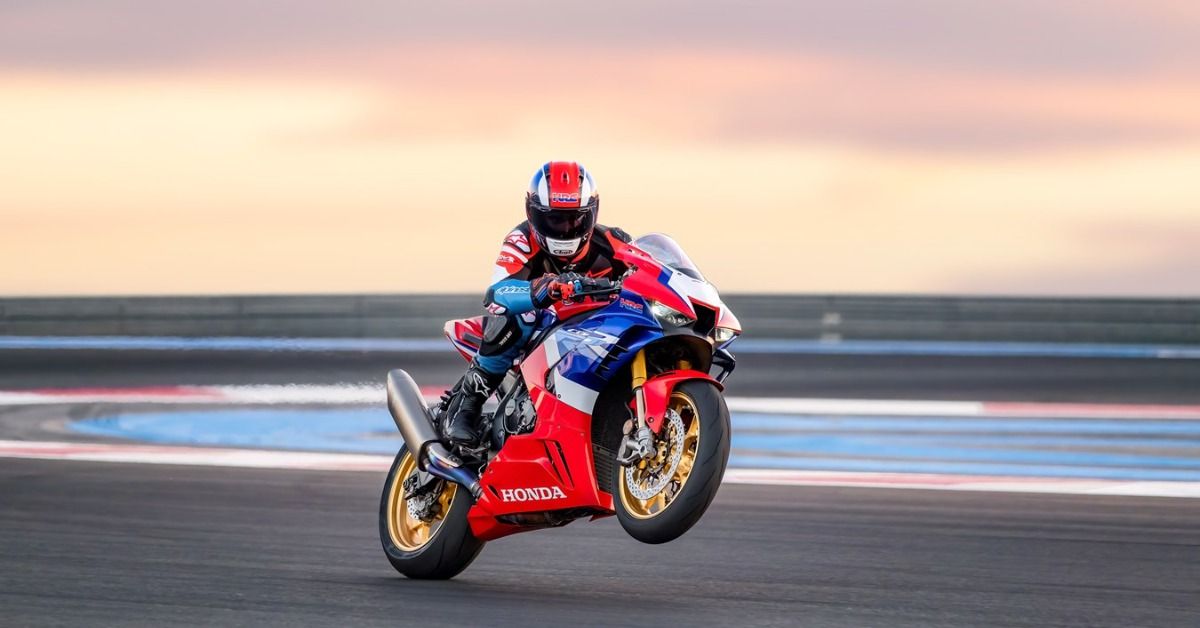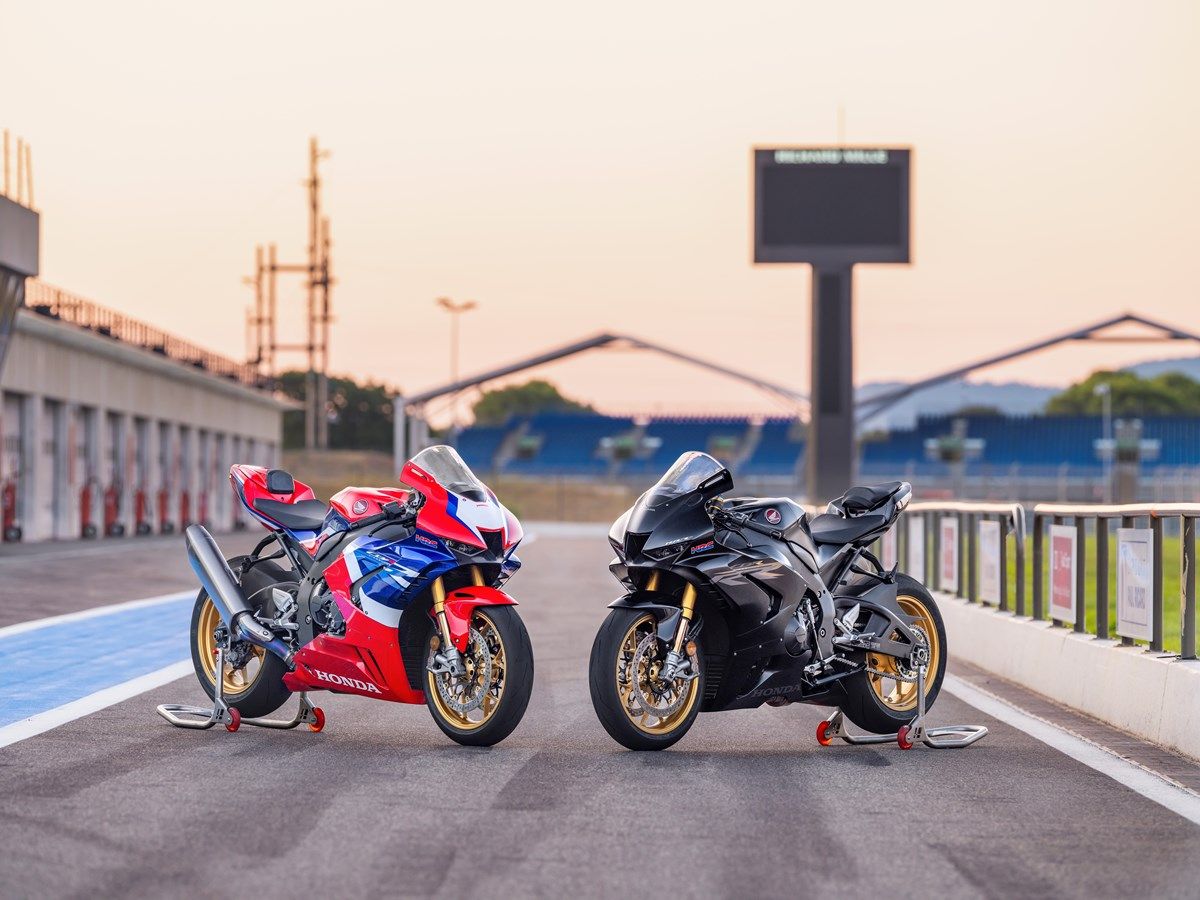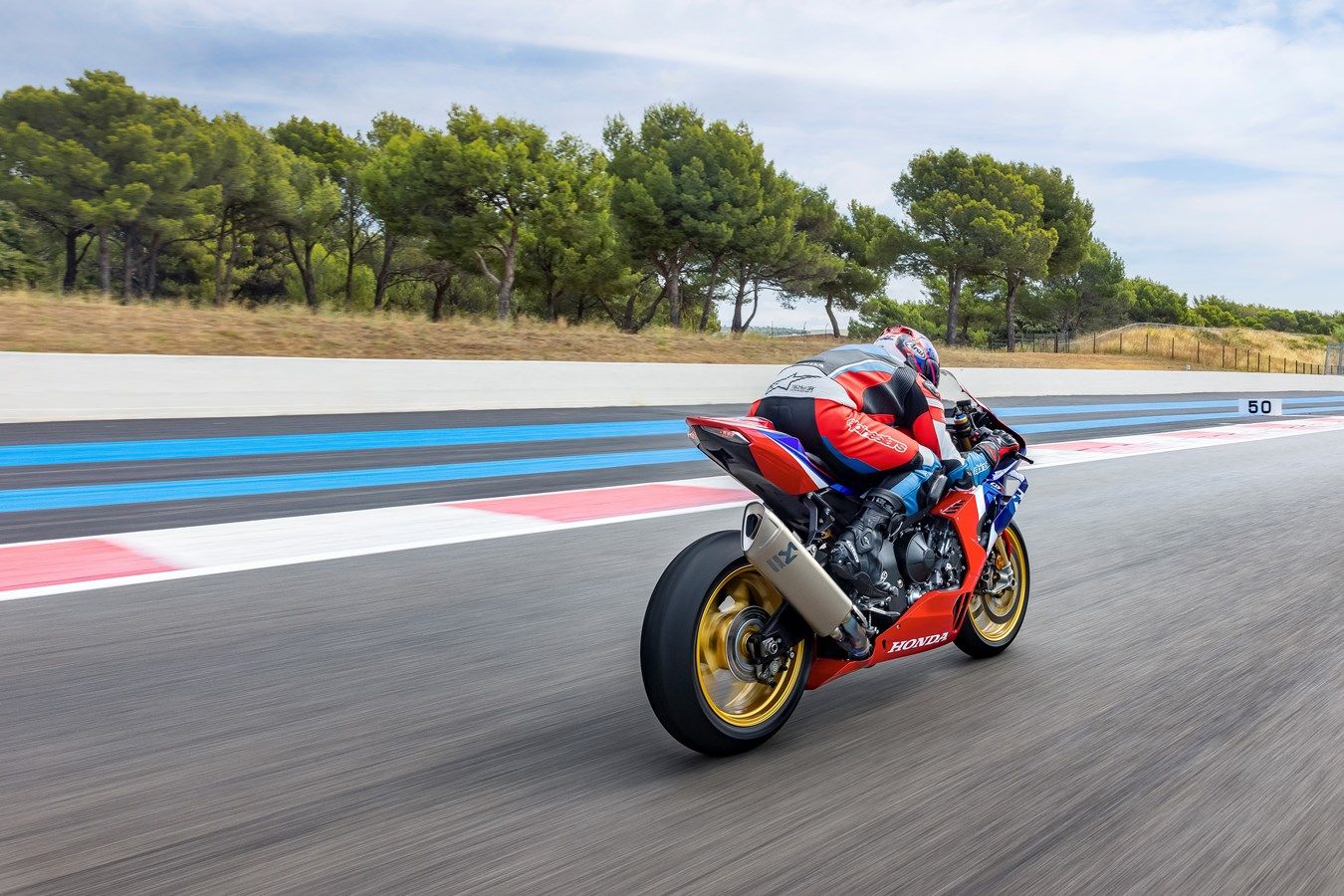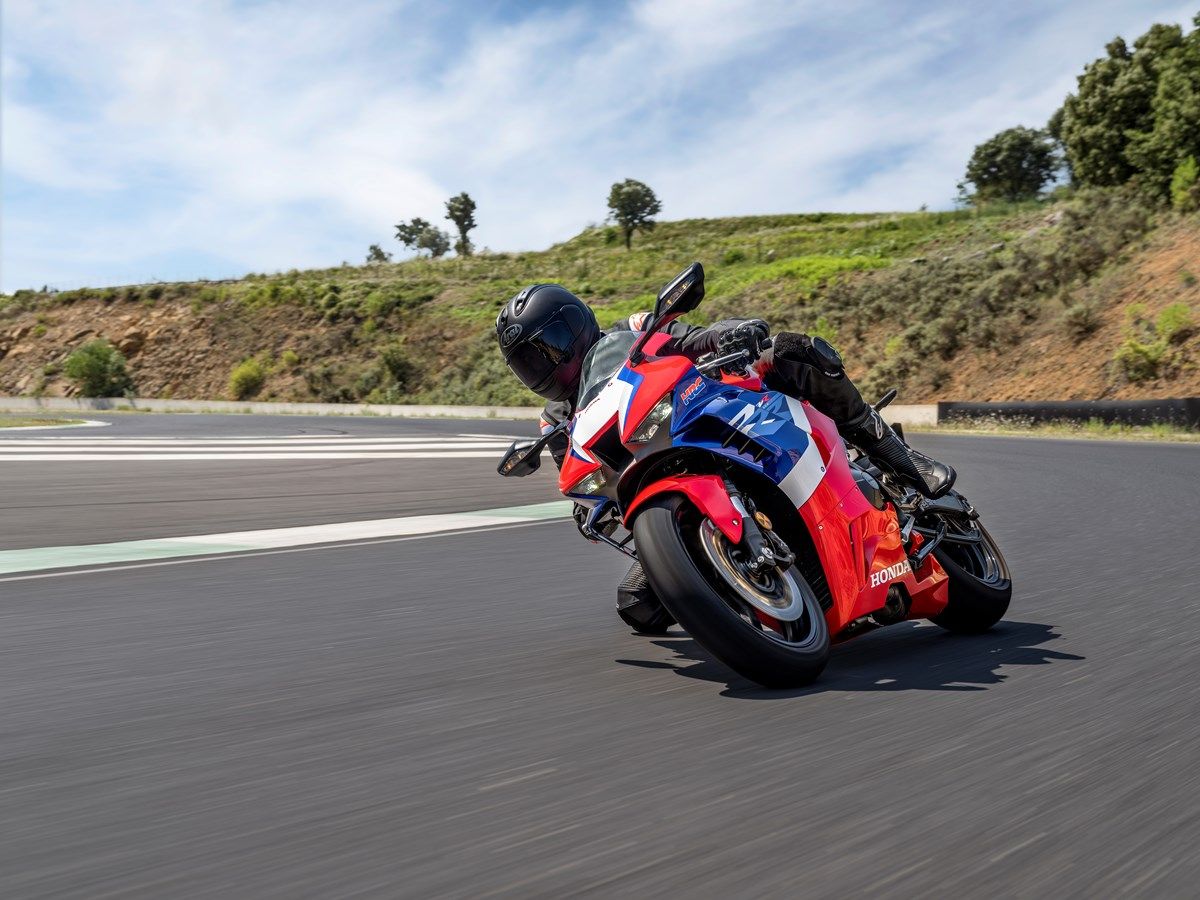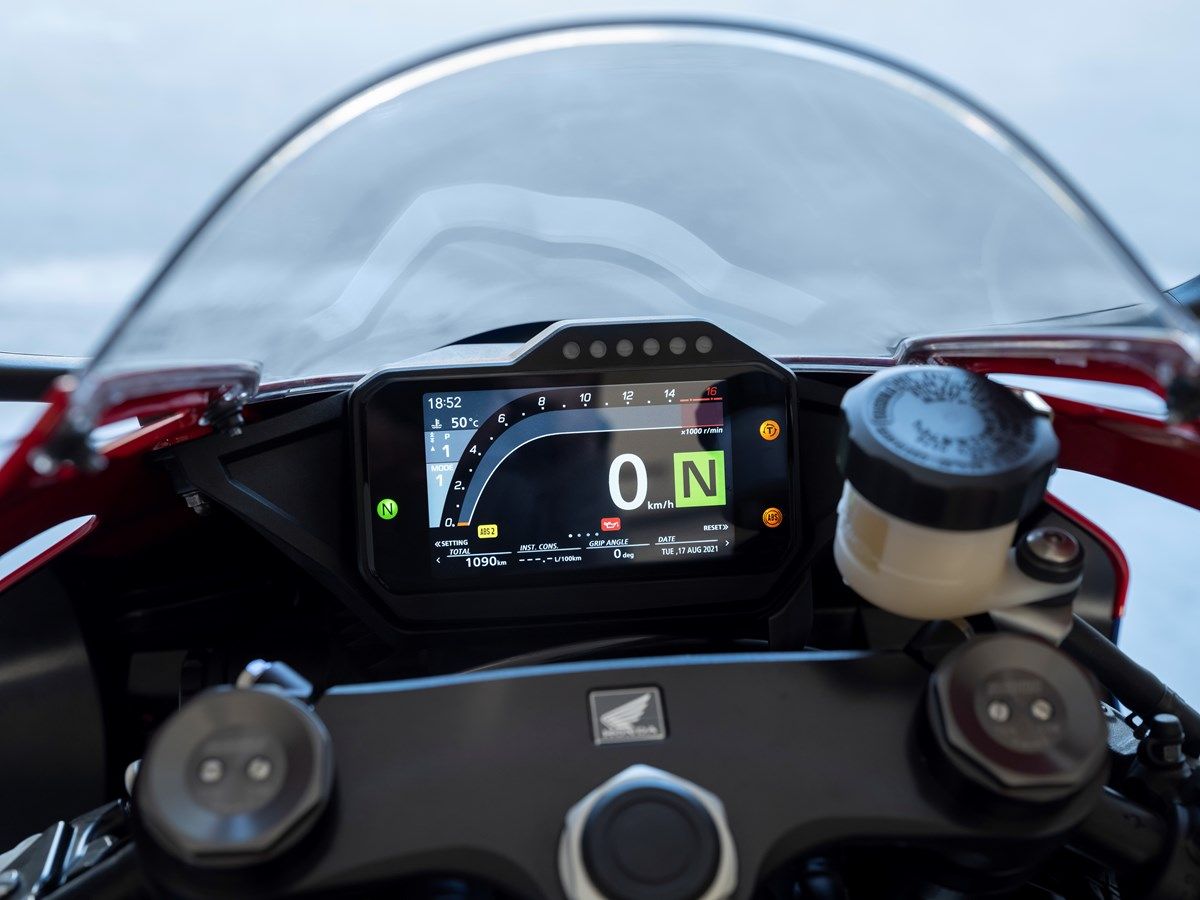It’s only been two years since Honda introduced the seventh-generation CBR1000RR-R Fireblade at the EICMA 2019. Apart from receiving an additional ‘R’, the new liter bike’s based on an all-new aluminum chassis, swing arm, gets a new 999.9cc engine, sharper design and a host of electronic rider aids. As impressive as the new Fireblade was on paper, it didn’t live up to the Japanese manufacturer’s high expectations in the racing arena of the World Superbike Championship (WSBK). Knowing how meticulous Honda is, without skipping a heartbeat, they decided to iron out the wrinkles and make it an accurate and devasting weapon. Some may say, with the iconic nameplate celebrating its 30th anniversary, this could have been another reason to sharpen the current and the most powerful Fireblade. Let’s take a closer look at the new updates the 2022 Fireblade has received.
Minimum Tweaks, Maximum Performance
Honda believed the current-gen Blade could improve its corner-exit acceleration and make the throttle response linear and easy on the wrists by tackling its tall gearing ratio issues. The first thing they replaced was the rear sprocket and increased its teeth from 40 to 43 and shortened the final drive ratio to achieve better acceleration. Without getting too technical into the mechanical upgrade, this ensures the bike manages to maintain its power output and torque at high rpm in the mid-range rev band while offering a stronger throttle response through all the gears. Due to this change, the chain is longer, resulting in a fraction longer wheelbase.
To increase the speed of the airflow and improve its efficiency, the 2022 Fireblade gets a new airbox and revised intake ports. By redesigning and shortening the second and third intake funnels by 15mm, the updated 4-2-1 exhaust has optimized the flow through the revamped catalytic converter. The compact and lightweight titanium muffler is designed by Akrapovic. The exhaust valve is also designed along with Akrapovič, and it delivers both low-rpm torque and high-rpm power, while a valve stopper stops exhaust-gas leak when closed and keeps tabs on reducing noise.
The list doesn’t stop there as Honda has worked on the Honda Selectable Torque Control (HSTC) or simply put traction control system with some help from the Honda Racing Corporation (HRC). The 2020 model came with the slip rate software which detects a sudden change in the ratio of front and rear wheel to reduce wheel spin and for the motorcycle to get a better grip. The new Fireblade gets an improved system that is intuitive, has smoother feedback and even a linear throttle feel.
The new Fireblade retains the same 330mm disc with 4-piston Brembo calipers in the front, but now comes with a new material and surface finish for improved and consistent braking capability on the tarmac and on a racetrack. The top model, Fireblade SP, continues to be equipped with high-tech Ohlins Smart Electronic Control and Brembo suspension and braking equipment but now gets a newly revised electronic quick shifter. For better stability and braking performance, the new Blade has borrowed winglets from its MotoGP sibling.
Born To Be Wild
Traditionally, the Big H never seriously got involved in the horsepower numbers game. Sure, it was there and thereabout, but Fireblade’s DNA has been to bring world-class performance for real-world conditions. Honda backed this philosophy by believing that their motorcycles should be user-friendly and practical. In 2020, the firm took a U-turn and decided to blitzkrieg the competition. The new liter engine was sculpted and designed based on Honda’s ‘street-legal MotoGP machine’, RC213V-S. With a power output of 214 hp at 14,500 rpm and 113 Nm at 12,500rpm, these numbers could not have been possible to achieve without borrowing the same ‘over square’ 81mm bore and 48.5mm stroke from the RC213V.
What is a bit surprising is that the Fireblade got introduced to the world of electronic rider aids in the 2017 model? As mentioned earlier, Honda took pride in rolling out sports bikes that were practical for roads. That’s why it remained capable on the city streets, but it was found wanting on the racing track. Honda updated its Inertial Measurement Unit (IMU) by Bosch from five-axis to six in the 2020 model, which remains the same for the new version. It has nine levels of traction control, one being the least intrusive, two-stage ABS modes — Sport and Track, three default riding modes, three levels of engine brake and three settings for wheelie control.
The secret behind the Fireblade’s handling prowess, balance and weight distribution is all down to the aluminum diamond frame and the swingarm, made from 18 individual thicknesses of aluminium, both based on the RC213V-S design. Due to this, the superbike offers more accurate high-speed steering, improved stability under acceleration and braking, and feel for front and rear grip on the limit. Honda has not currently revealed the 2022 Fireblade’s prices for the US market, but it is expected to arrive in the dealerships in Q2 2022.

